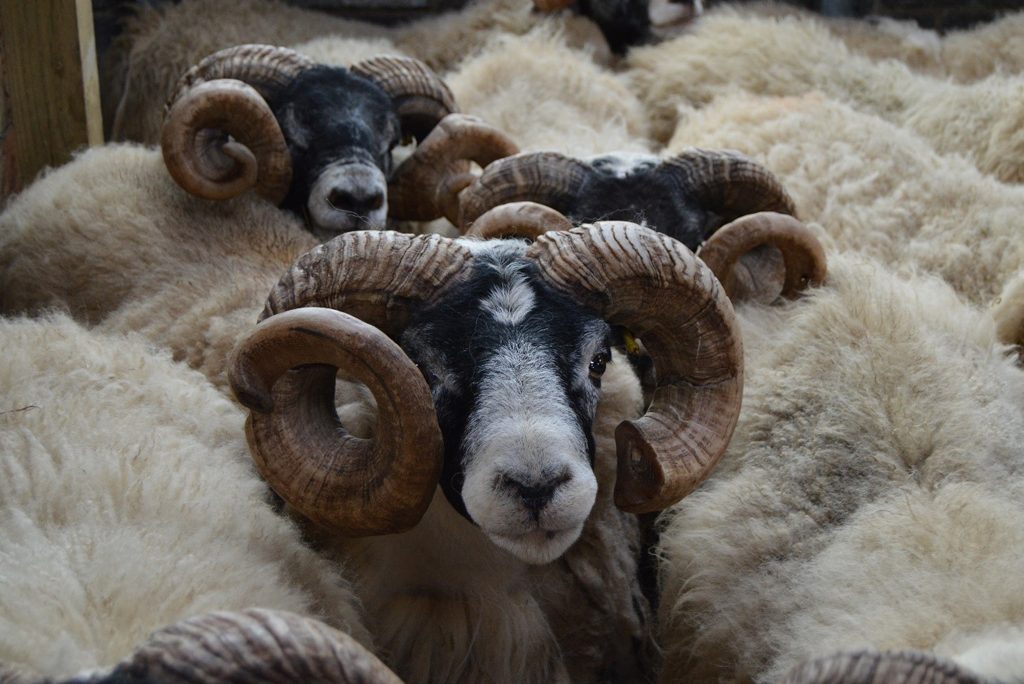This National Storytelling Week, uncover some of the oral histories collected by the Here We Are project and find out about 20th Century shepherding in Argyll and Bute.
Roddy McDiarmid, Alastair MacCallum and Ernie MacPherson (sadly now passed away) provided first-hand information for our project A Hundred Years of Shepherding in Cairndow. They had become shepherds as soon as they left school at fifteen. Alastair’s uncle and brothers were shepherds here, as were Roddy and Ernie’s fathers.
It’s Hirsel…
On the 45,000 acres of Ardkinglas Estate there were between 8 and 9 thousand sheep split into twelve hirsels (or areas of hillside). There were about ten shepherds, so some tended more than one hirsel. The size of the flock on a hirsel depended on the extent of the hillside and the type of terrain.
Shepherds in Spring
Roddy told us:
The first pair of leather boots I bought were horse hide. They were really great boots, they cost six pounds out of Johnny Dewar’s in Inveraray, and I remember thinking you could get two lambs for the price of them! That was in 1959.
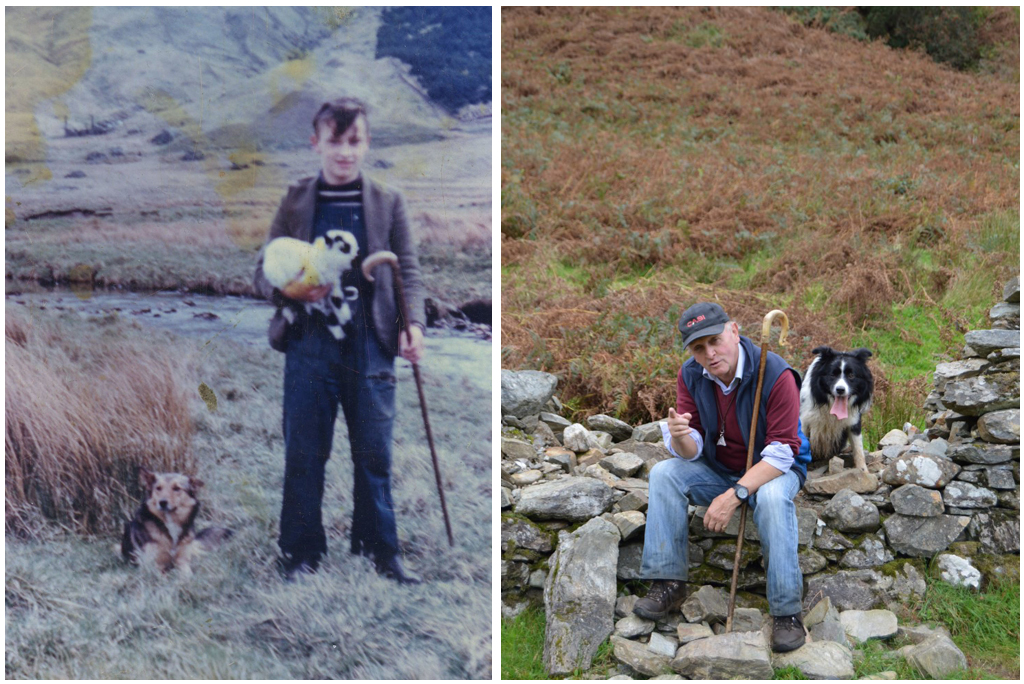
Roddy MacDiarmid aged 15 in 1959, and in 2017
Lambing started about the 24 – 25 April and lasted a month or so. You were out on the hill all the time. If you were lucky you came on a ewe that was in trouble and needed a hand, if you were unlucky you could miss her and find her lying dead next day.
I worked alongside my father, I learnt a lot from him. He was very strict, if he showed me how to do something once he expected me to pick it up there and then. I learned pretty quick, I had to, I watched and listened.
Summertime and the living is busy
Ernie says:
The June gathering was to clip the hoggs and the yeld ewes, to mark all the lambs, to castrate the male lambs, and all the sheep were dipped against flies and maggots.
The milk clip would be July into August. This was the busiest time of the year.
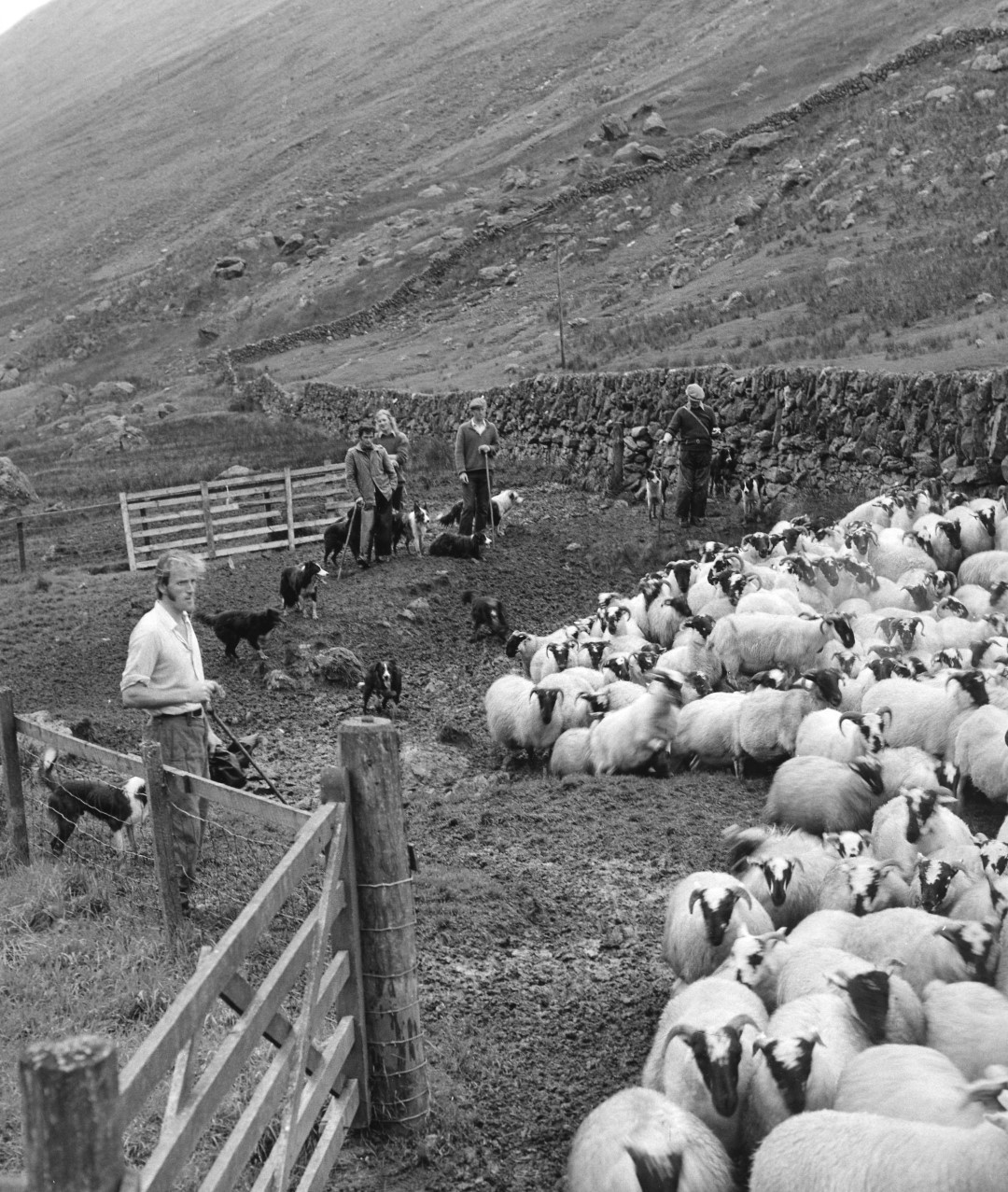
Ernie MacPherson at Butterbridge in the 1970s
Our day started at four or before. There would be eight or nine of us gathering [the sheep]. If it was misty it was a wee bit dodgy, because you didn’t know whether to stay at home or to go. Later when we had the phones it was fine; you could phone up one another and find out.
Everyone had good gathering dogs with them, snarling and fighting on top of us in the back of the Landrover. So you would start off gathering, then sometimes the mist might come in when you were half way through the hill. You would try and halt everybody to wait, to see if it would clear because you couldn’t see the sheep at that point.
Never work on an empty stomach
Alistair adds:
I always had a breakfast before we were leaving in the morning.
The likes of my mother and Mrs MacDiarmid, Butterbridge and Mrs Morrison over at Rowantree they did the ‘handlings’ – the food for the gathering.
Once we got down off the hill we went to that house and you got your breakfast – porridge, bacon, eggs, scones, whatever was going. Then there would be a full bowl of soup, meat, tatties at midday. Then if you were going on clipping into the evening, you would get what was called high tea, maybe salad and bread or scones or loaf.
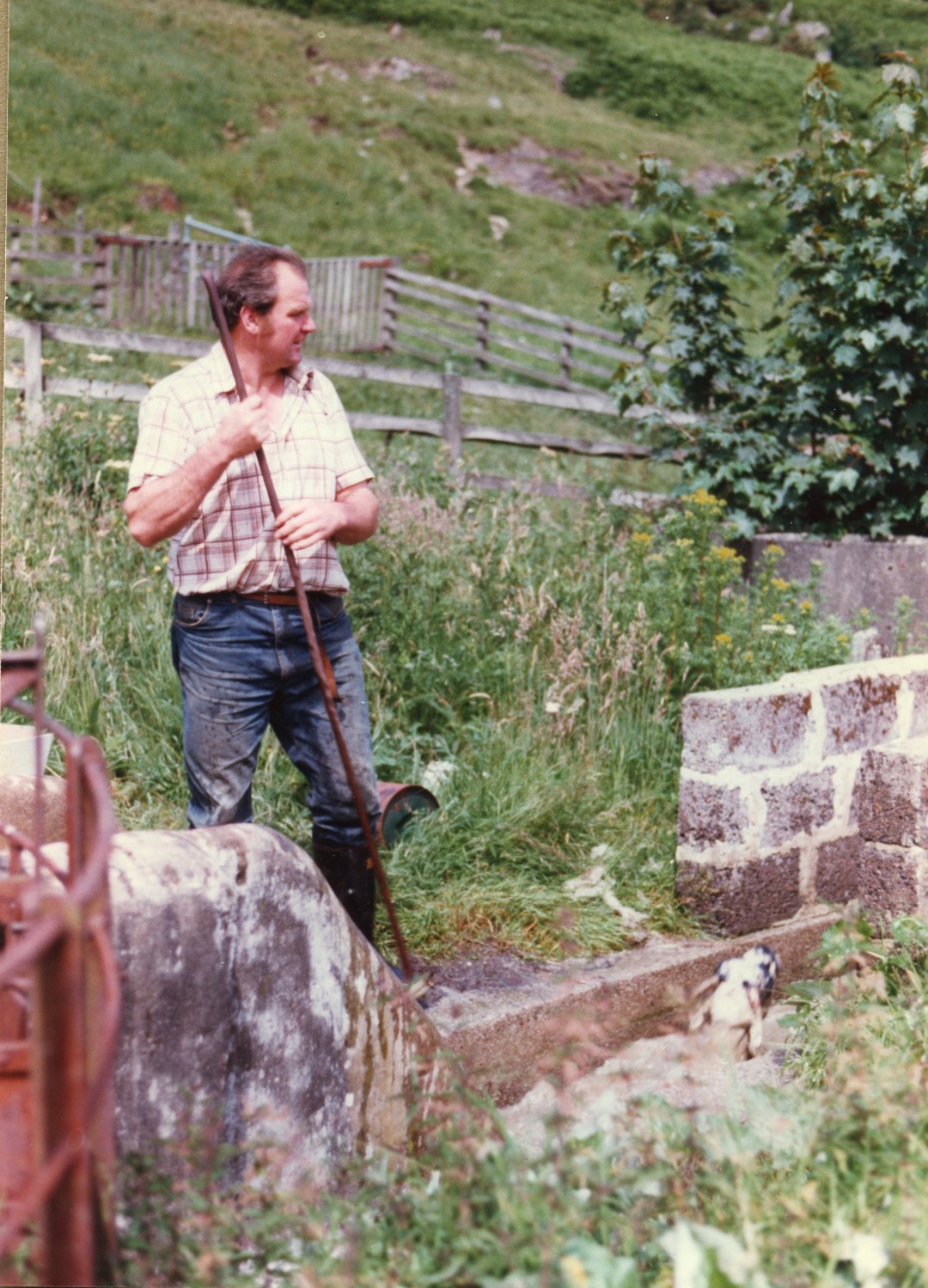
Alistair MacCallum, Clachan Fank 1997
There could be up to 30 men clipping sometimes, because your neighbours came along to give you a hand. People clipped mostly on stools in those days. [Machine shearing came in in the late 1960 – 70s.]
The young boys’ job was to ‘crog’, to catch the sheep and take it to the stool. You could be kept going pretty hard, it was quite a hard job for a young boy. But it was enjoyable, the craic was good – plenty winding up and banter!
Autumn

There would be quite a bit of good natured competitiveness between us. Who got the best price for his lambs or for his cast ewes. Whoever got the best price we would bring it up over a dram – he’d maybe have to stand a round. Who got the best lambing percentage, that was competitive too.
Winter
We gathered again for the winter dipping, in early November.
The black winter dip was full of DDT and poisonous stuff, which wasn’t much good for you but you were covered in it anyway. It was banned in the 70s I think it was, they brought in other stuff.
If you missed a ewe out in the hill that never got winter dipped, you could tell the difference a mile away. Her condition was never as good, and her wool was never the same because of the lice, which can be a killer.
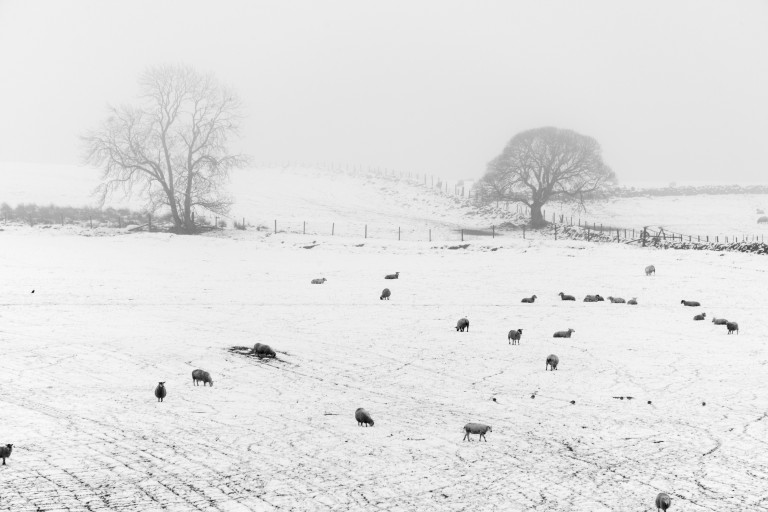
We started feeding the tups a month before they went out to the hill on the 24-25 November. There would be three tups to 100 ewes, so on Ben Chorranach you would need 22-23 tups.
Ben Coutts brought in a wee incentive scheme. If you had all your tups back in before Hogmanay you got say £20, if you were missing one it was less, if missing two less, if you were missing half a dozen you wouldn’t get anything. When you were meeting you would be asking ‘have you all your tups in?’ then you would ‘crow’ if you had yours in and others hadn’t, it was just good fun.
Thanks to Dot and Olivia from Here We Are for collecting these shepherding stories. Find out more on their website.

